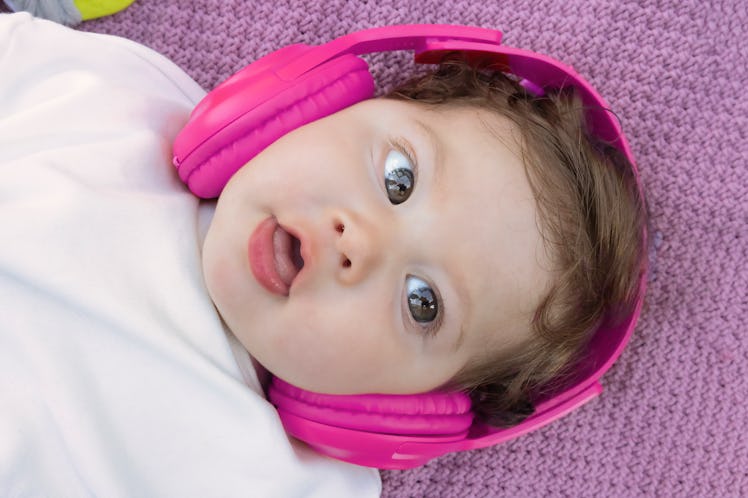How To Enjoy 4th Of July Fireworks Without Deafening Your Kids
Parents should go out of their way to protect children's eardrums.

Baby ear protection is important, and especially on holidays like the 4th of July. The world can get incredibly loud, even on a regular weekday — consider all the construction noise, growling buses, and honking horns. But none of that can compare with 4th of July fireworks displays, with families gathering outside with kids of all ages for the spectacularly loud annual spectacle.
All loud sounds are bad for infants, who have delicate eardrums and can easily suffer future hearing loss if not protected. Wearing baby ear protection is always a good idea, but it’s essential if you’re going out to watch fireworks.
“When we talk about age-related hearing loss, it really is compounded by exposure to noise over the course of one’s life,” explains Ian Windmill, Ph.D., Clinical Director of the Division of Audiology at Cincinnati Children’s Hospital. “The earlier you start protecting your hearing, the better off your hearing is in the long term.”
Windmill notes that long-term damage isn’t the only concern. As very young children spend more time listening to music or shows through headphones, the volume they listen at increases along with the prospect of short-term hearing damage. “Children today are exhibiting more signs of noise-induced hearing loss,” he says. In fact, patterns of hearing loss associated with prolonged domestic noise — as opposed to industrial noise — were observed in up to 10% of children in the early 2000s, a number Windmill is certain has climbed since.
The problem of noise is particularly acute for infants. This is largely due to their anatomy. Windmill notes that sounds for infants are actually louder for babies than they are for adults due to the size of their ears. This can make it difficult for parents to understand when noise is becoming too noisy.
Interestingly, the source of the noise doesn’t matter. Loud is loud. Loud classical music, for instance, is no different than loud rock music. Loud industrial noise is no different than a noisy restaurant, which can have similar decibel levels. The trick is to understand that the louder an environment is, the less time a child should be exposed to it.
For parents unsure about being able to tell when things are getting too noisy because they have suffered hearing damage themselves or are just part of a loud family, Windmill notes that there are plenty of apps that offer decibel monitoring. They generally work well to get a ballpark understanding of how loud an environment is.
“Generally speaking you want to keep everything below 70 on those decibel scales,” he says, but also offers another handy, non-app trick. “If you’re in a room with anybody else and you have to raise your voice for someone to understand you at a distance of three feet, it’s too loud.”
The best noise prevention, according to Windmill, is to simply remove a child from noisy environments. Still, life gets noisy. Parents can’t help that. They can, however, pick up some products that help provide baby ear protection. The most comprehensive devices are “earmuff” style protection that resemble headphones. They’re common and come in varying sizes. Parents should make sure that whatever they purchase has a noise reduction rating. One of the main benefits of this type of hearing protection is that it covers the ear rather than going inside the ear and causing problems with ear wax.
Earplugs, on the other hand, are not designed for children. Not only can they fall out and create a choking hazard, but they can also cause damage to a child’s short ear canal. This is the same reason Windmill warns that parents should never use ad hoc methods of baby ear protection, such as wadded tissue paper or cotton balls.
In the end, Windmill urges parents to be mindful of hearing issues. “We call it the invisible problem,” he says. “Once you damage parts of the ear, it’s damaged forever. You protect a kid from falling down, so protect their hearing too.”
How to Use Baby Ear Protection and Preserve Baby Hearing
- Try to keep noise to normal conversation levels.
- Download a decibel meter app and keep noise below 70.
- Anytime you have to struggle to understand someone three feet away, it is too noisy.
- Invest in earmuff style hearing protection with an adequate noise reduction rating or NRR.
- Understand that the closer you are to the source of the sound, the louder it will be.
- Never use ad hoc methods of hearing protection like cotton balls or tissue paper.
This article was originally published on